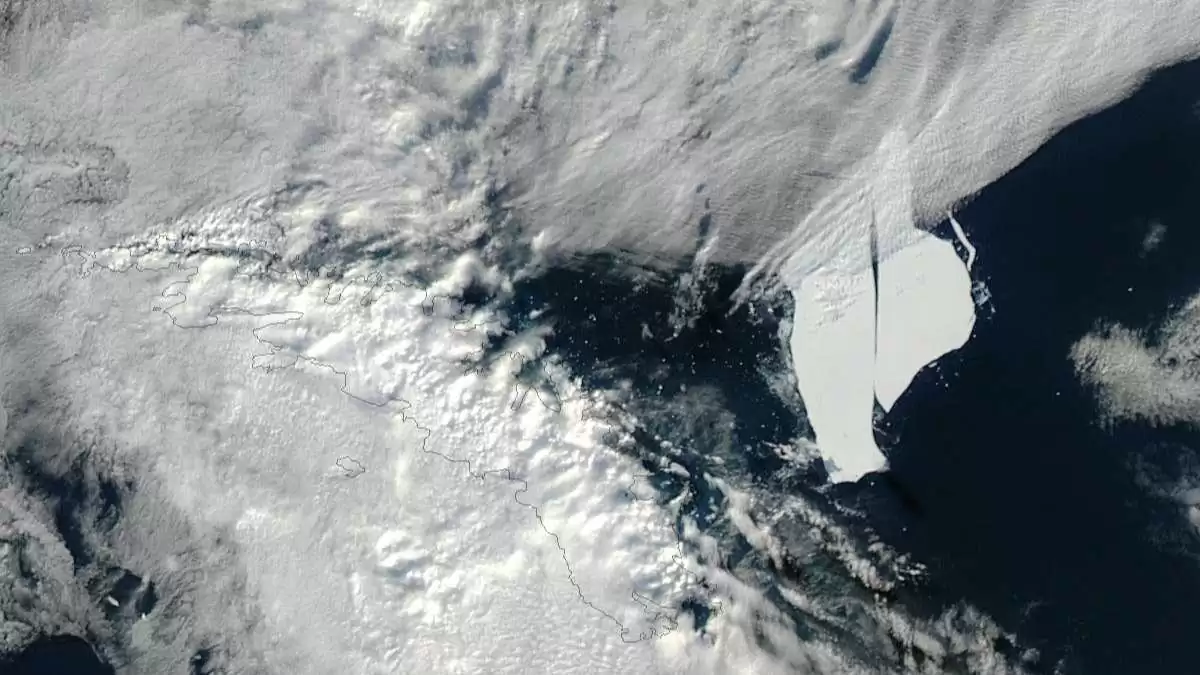The Frozen Giants: Top 5 Largest Iceberg Ever Found
Icebergs are among nature’s most striking and awe-inspiring creations, massive and floating majestically across the ocean’s waters. Formed from large pieces of ice that break off from glaciers or ice shelves, these floating giants capture attention for both their sheer size and environmental significance.
While they are part of natural processes in the polar regions, their size and movement often offer key insights into climate change and the dynamics of Earth’s frozen regions. The size of icebergs is commonly measured by their surface area, and many large icebergs have had a lasting impact on the Southern Ocean. Let’s explore some of the most famous and largest icebergs recorded in history.
The 5 Largest Iceberg in History

1. Iceberg A23a: The Current Giant
Currently, the largest iceberg on the planet is Iceberg A23a, which broke off from the Filchner-Ronne Ice Shelf in 1986. This colossal chunk of ice is estimated to be roughly twice the size of Greater London. Spanning an area of 3,880 square kilometers, it weighs approximately one trillion tonnes—truly a natural wonder of immense proportions.
For over three decades, Iceberg A23a remained stuck on the seafloor before it began to drift again in 2020, much to the fascination of researchers and scientists. Having been “stuck” for so long, its release and movement into the Southern Ocean have captured significant attention from the global scientific community.
Researchers have kept a close watch on this iceberg, assessing how its movement could affect the Southern Ocean’s ecosystem. It is worth noting that Iceberg A23a is not a static phenomenon—it continues to break apart in fragments, adding complexity to its ongoing behavior.

2. Iceberg B-15: A Mammoth of the Past
Once the largest iceberg ever recorded, Iceberg B-15 reached a mammoth size of 11,007 square kilometers in 2000. To put that into perspective, it could cover a significant portion of many countries. The iceberg originated from the Ross Ice Shelf and broke off into several large pieces after its initial calving.
B-15 was notorious for drifting across the Southern Ocean for nearly 10 years before finally breaking into smaller fragments. Despite no longer being the largest, B-15’s historical importance remains significant due to the immense surface area it covered and the questions it raised about the behavior of massive icebergs as they travel.
Over the years, B-15 caused widespread interest in how such large icebergs impact the surrounding marine ecosystems. Its sheer size, some of it larger than some countries, prompted scientists to observe how other ecosystems react when giant icebergs drift into new territories. B-15’s legacy remains a key milestone in the study of iceberg dynamics.

3. Iceberg A-38: A Massive Breakaway
Iceberg A-38, which calved in 1998, became one of the world’s largest icebergs in history at the time with a size of 6,900 square kilometers. A-38 originated from the Filchner Ice Shelf in the Antarctic region, and at the time of its appearance, it was one of the most significant events in terms of iceberg creation.
The iceberg maintained significant momentum as it traveled through the Southern Ocean and reached various points near the sub-Antarctic zone. While it eventually broke into smaller sections, A-38’s initial size offered valuable data on how ice shelf breaks occur and how large icebergs affect shipping routes, ocean temperatures, and marine life.

4. Iceberg A-68: A Historic Break-in 2017
Emerging as one of the most notable icebergs in recent years, Iceberg A-68 calved from the Larsen C Ice Shelf in 2017 and quickly captured the world’s attention with its immense size of 5,800 square kilometers. At the time of its break, it was the largest iceberg ever recorded in terms of size and dimensions along the Antarctic Peninsula.
Unlike the earlier generation of icebergs, A-68 was notable because it drifted towards warmer waters and increased in fragmentation. Researchers scrambled to keep track of its movement through satellite monitoring, as A-68 presented unprecedented conditions for scientists to study.
Researchers were concerned not just about the iceberg’s sheer size but the broader environmental effects it would have once it disintegrated or melted into the surrounding sea.
This iceberg provided valuable insight into climate change because of how it seemed to accelerate ice shelf melting. It broke up into several pieces, which dispersed across the ocean, influencing research into sea levels and how glacial systems might respond to warming oceans.

5. Iceberg A-76: A New Addition
In 2021, Iceberg A-76 claimed its spot in the records, measuring 4,320 square kilometers and becoming the largest iceberg at that time. The iceberg came from the Western Antarctica’s Ronne Ice Shelf and took the title as the largest by surface area.
Iceberg A-76’s size is only the tip of the iceberg (pun intended), as scientists closely followed its drift across the Southern Ocean. One of the remarkable aspects of A-76’s movement was how its drift path impacted predictions for other future iceberg events.
By learning how A-76 moved, scientists could make more accurate predictions of ice sheet calving and other environmental changes affecting Antarctica. Additionally, A-76 continues to present environmental challenges regarding maritime safety due to its immense size.
Final Thoughts
Icebergs, though cold and inhospitable, serve as valuable pieces of data for understanding the Earth’s changing environment. Whether it’s Iceberg A23a with its still-mysterious movements or the historical importance of B-15, the fascination and study of these natural wonders continue to shape our knowledge of climate science, oceanic ecosystems, and climate change.
The Top 5 Biggest Icebergs showcase not only nature’s enormous ice masses but also the essential role these gigantic masses of ice play in understanding our planet’s changing dynamics. As some of these massive icebergs begin their slow journey into warmer waters, they serve as vivid reminders of our fragile planet and the natural forces in action around us.
A23a, B-15, A-38, A-68, and A-76 all mark milestones in the study of Earth’s frozen regions and will undoubtedly inspire continued interest in iceberg science. These icebergs remind us of the changing patterns of our planet’s ice shelves and the immense power of nature we’ve yet to fully understand.








